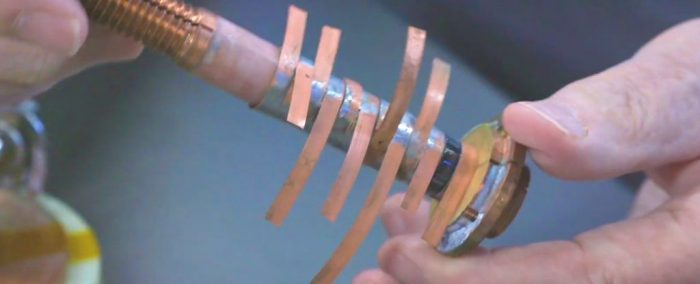A brand new experiment at the National High Magnetic Field Laboratory at Florida State University (MagLab) has set an incredible new standard for magnetics. Using a superconductor magnet, they generated at 45.5 tesla magnetic field, which is a new world record.
Now, (deep breath) we forgive you for not knowing what that means. Honestly, we don't even know what that means. But it does give us all a chance to talk about magnets (which are super cool) and what they're capable of (also very cool). So let's do just that!
What's a tesla?
Before the car, there was the man, Nikola Tesla. (Getty Embed)
Nikola Tesla (1856–1943) was a groundbreaking Serbian-American scientist whose research radically changed our understanding of electricity, wireless communication and energy, and so much more. A tesla (T) is a unit named after him that is used to measure the strength of a magnetic field.
What is the strength of a tesla? The average fridge magnet generates only about 5 mT (millitesla, or a 1000th of a tesla). So MagLab's new 45.5 T superconductor magnet? It is about 9,100 times more powerful than the World's Cutest Kid magnet that is holding up that picture that you drew in kindergarten.
And to put it in interstellar terms, a white dwarf star (one of the densest objects in space) has an estimated magnetic field of 100 T. This is one really powerful gadget!
On/Off
Another thing that separates magnets of this power from the ones on your fridge is that they're not always on, or permanent. The most powerful permanent magnet on Earth is something known as a Halbach sphere, which generates 4.5 T. Magnets more powerful than this require electricity to make their magnetic field. And in some cases? A LOT of it.
According to a paper in Nature, the previous record-holder of 45 T was created by something known as a high-power resistive magnet, or hybrid magnet, using 31 megawatts of power. Also, the entire device is the size of a building and weighs 35 tons! Only a few labs in the world can afford that kind of energy bill.
Superconductor magnets use way less electricity, but they're also less powerful.
Until now, that is.
Tiny, but mighty
Magnetic levitation, or Maglev, trains use superconductor magnets to 'float' above the track. (Getty Embed)
As we mentioned at the top of this post, we're going to need a few more university degrees to really understand what makes MagLab's invention work. But we don't need any of that to get why it is such a big deal.
Essentially, it's a super powerful magnet that's in a far smaller package (and that uses far less power) than before. The magnet still needs a lot more testing before it can be used practically. But given that superconductor magnets have all kinds of applications — from medical equipment to hovering high-speed trains — you can see why scientists are so drawn to this breakthrough.
It's positively magnetic, right?
 The superconductor magnet used in this experiment weighs just 390 grams. (MagLab)
The superconductor magnet used in this experiment weighs just 390 grams. (MagLab)










Wowza
❗ 😀 😆 🙄 😳 COoLiO, wouldn’t that hurt us though ? Also HI to everyone who reads this